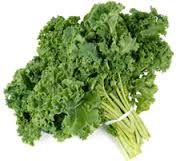Kale: So Much More than Just a Trend
 Love it or hate it, kale is huge. Though recent articles tote the end of the kale craze, the reality is that the beloved green remains extremely popular. From its Greek and Roman origins to its modern proliferation, kale is one of the most enduring, healthy, easy-to-grow, and delicious vegetables of all times. And, not surprisingly, it has a fascinating history.
Love it or hate it, kale is huge. Though recent articles tote the end of the kale craze, the reality is that the beloved green remains extremely popular. From its Greek and Roman origins to its modern proliferation, kale is one of the most enduring, healthy, easy-to-grow, and delicious vegetables of all times. And, not surprisingly, it has a fascinating history.
Fourth Century Greeks cultivated curly and flat-leaved varieties, later referred to by the Romans as ‘Sabellian kale’, the ancestor of modern strains. Throughout the Middle Ages, kale was one of Europe’s most popular vegetables. Later, during World War II, kale cultivation was encouraged in the UK as part of the war effort.
Along with cabbage, kale was assumed by the Irish to possess fortune-telling power. Young people used the green to judge the nature of their future spouses: a bitter stalk meant a bitter mate, a lot of dirt clinging to the root meant a wealthy husband or wife. “Kale-Pulling” rituals were especially popular on Halloween, when it was believed the plant’s prophetic powers were more potent.
 The year 2000 saw the birth of the current kale craze. It started when Vermont-based artist, Bo Muller-Moore created the now-famous “Eat More Kale” t-shirt in an effort to help a friend move a bumper harvest of the crop. The rise of CSAs also helped, as did celebrities such as Sarah Jessica Parker, Salma Hayek, and Demi Moore, who used kale in juice cleanses. Most recently, McDonald’s Canada incorporated a kale salad with their traditional menu of hamburgers and French fries.
The year 2000 saw the birth of the current kale craze. It started when Vermont-based artist, Bo Muller-Moore created the now-famous “Eat More Kale” t-shirt in an effort to help a friend move a bumper harvest of the crop. The rise of CSAs also helped, as did celebrities such as Sarah Jessica Parker, Salma Hayek, and Demi Moore, who used kale in juice cleanses. Most recently, McDonald’s Canada incorporated a kale salad with their traditional menu of hamburgers and French fries.
Part of kale’s appeal is its nutritional payload: one cup of boiled kale is packed with vitamins A, C, and K, as well as potentially cancer-fighting isothiocynates and anti-inflammatory flavonoids. Kale is also an excellent source of manganese, copper, Vitamin B6, calcium, and fiber.
